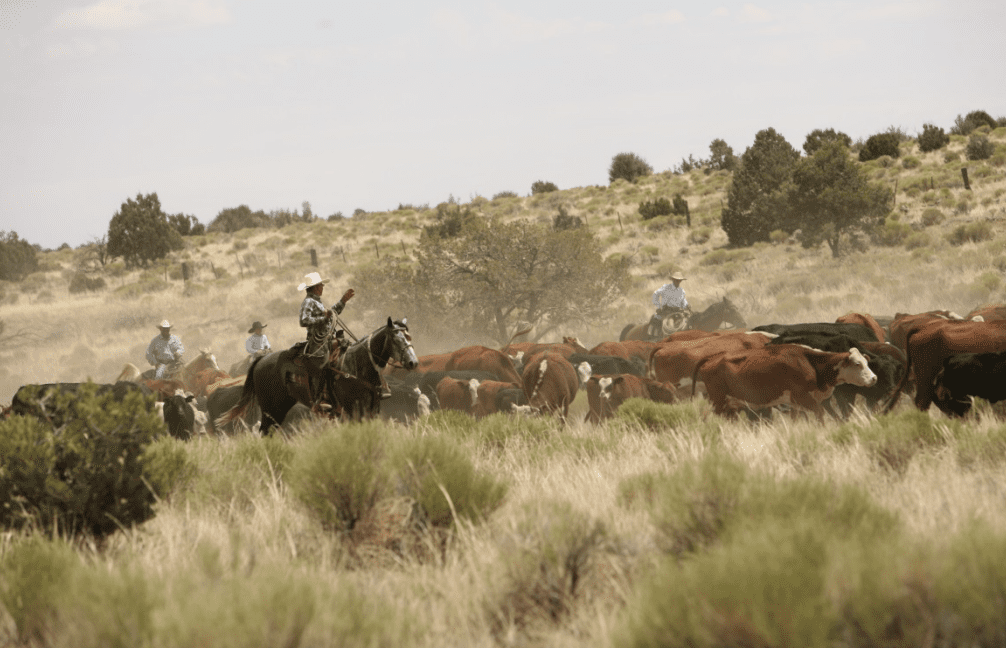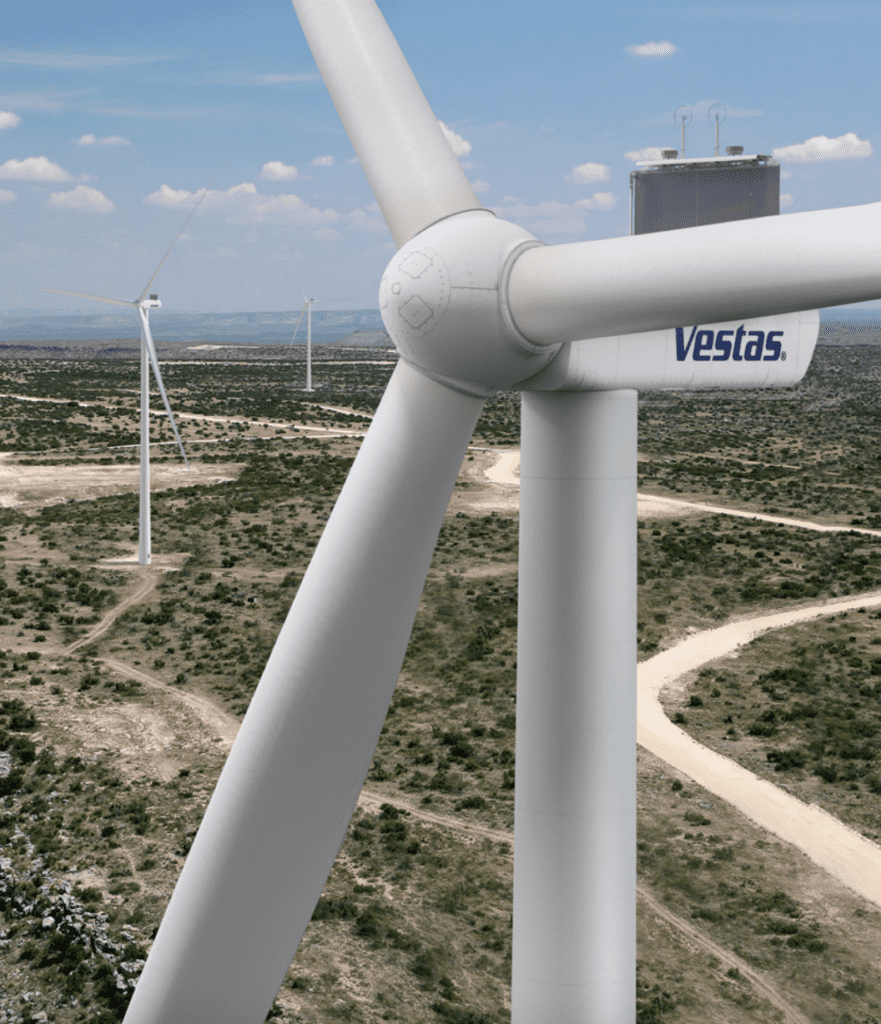Major Wind Farm at Arizona Cattle Ranch Comes Online

AES Corp. has announced the start of commercial operations for phase one of the Chevelon Butte wind farm in Arizona, a project sited on one of the state’s oldest working cattle ranches.
AES on June 1 said the project’s first phase is bringing 238 MW of power generation online, with another 216 MW expected to enter commercial operation in 2024. The wind farm encompasses “a few hundred acres” acres on the 42,000-acre Chevelon Butte Ranch, according to Terrance Unrein, senior development director for AES.
“Siting wind farms on working cattle ranches creates opportunities for mutually benefiting outcomes,” said Unrein, who told POWER, “Often times, working cattle ranches are comprised of large pieces of otherwise undeveloped and remote land proximal to existing high-voltage transmission which can be a good location for wind energy. And for landowners, operating wind energy projects only comprise a small fraction of the landscape, and therefore are nicely compatible with livestock grazing and ranching operations. Many landowners actually claim that our wind farms have improved their livestock ranching operations due to the roads we build and vegetation/snow removal maintenance activities at our operating sites.”
‘Landmark Project’
The ranch spans land in Coconino and Navajo counties, about 30 miles south of Winslow.
“This landmark project will deliver cost-competitive renewable energy to Arizona, while operating on one of the oldest working cattle ranches in the state,” said Bernerd Da Santos, executive vice president, chief operating officer, and president of the Renewables division for AES. “Once both phases are complete, Chevelon Butte will be Arizona’s largest wind energy project and the first wind farm built in Northern Arizona in nearly a decade.”
Officials on Thursday said the project with both phases complete will feature 105 Vestas V150 4.5-MW wind turbines, with a 120-meter hub height.

The Chevelon Butte Ranch, which has been owned and operated by members of the O’Haco family for more than a century, is famous for its history of raising livestock, which over the years has included sheep and horses. The ranch today is known for its herd of Black Angus cattle. Parts of the ranch are used by hikers and rock climbers, as well as by fishermen and hunters.
“The ranch operation was not impacted by the construction of the Chevelon Butte wind project,” said Unrein. “We worked closely with our landowner partners during construction of the Chevelon Butte wind farm to ensure they were fully informed of our construction schedule and sequencing such that they could move and manage their herds as necessary. In addition to regular coordination meetings and continual communication, we actually provided our ranch management team satellite-enabled tablets that showed them where our construction crews were, and where they were going next.”
Property Stewardship
The O’Haco family several years ago created a partnership with the Arizona State Land Department, U.S. Forest Service, Arizona Game and Fish, and the Natural Resource Conservation Service, who along with the family continue stewardship of the property.
Lease payments from the wind farm to the State Land Dept. are expected to help fund Arizona’s public schools and universities, along with other Arizona-based beneficiaries.
Da Santos said, “Achieving this milestone together with our landowner, local community partners, Coconino and Navajo County leaders, Arizona state agencies and our customer, APS [Arizona Public Service], has ensured that this project will produce clean energy for decades to come, right alongside Arizona’s ranching industry.”
Justin Joiner, vice president of Resource Management for APS, said, “APS is Arizona’s leader in clean energy and we’re making progress to add more renewable energy resources, while maintaining a reliable and affordable electrical system. The Chevelon Butte wind facility will add more wind energy to our balanced and diverse energy portfolio, helping us advance our 51% clean resource portfolio on the road to delivering 100% clean energy to our customers by 2050.”
Radar-Activated Lighting System
AES, in coordination with regulators and permitting authorities and mindful of environmental concerns, outfitted the wind farm with innovative design features to minimize its impact on the surrounding land. Those features include integration of a radar-activated lighting system that enables the turbine lights, which are required by federal law, to turn on only when low-flying aircraft are in the vicinity.
“The radar-activated lighting system allows AES an innovative way to balance maintaining the dark sky characteristics of northern Arizona and the federally-required nature of turbine lighting for nearby flying aircraft,” said Unrein. “This is an example of the ways AES works with communities to maintain the local characteristics of the area while bringing much-needed energy projects to the region. We have utilized radar-activated lighting systems on other projects in Wyoming and South Dakota.”
Unrein told POWER, “An Aircraft Detection Lighting System requires installation of one or more specialized radar towers which are designed and calibrated in coordination with the Federal Aviation Administration [FAA]. These radar towers are programmed to detect low-flying aircraft within vertical and horizontal setpoints established by the FAA, and are integrated in the wind farm’s control system such that the turbine night-time lights are activated when aircraft is detected.”
Unrein said AES has been operating energy projects in Arizona since 2010. The company has 450 MW of solar projects in the state, in addition to the electricity being produced by the first phase of the Chevelon Butte installation.
—Darrell Proctor is a senior associate editor for POWER (@POWERmagazine).
The post Major Wind Farm at Arizona Cattle Ranch Comes Online appeared first on POWER Magazine.